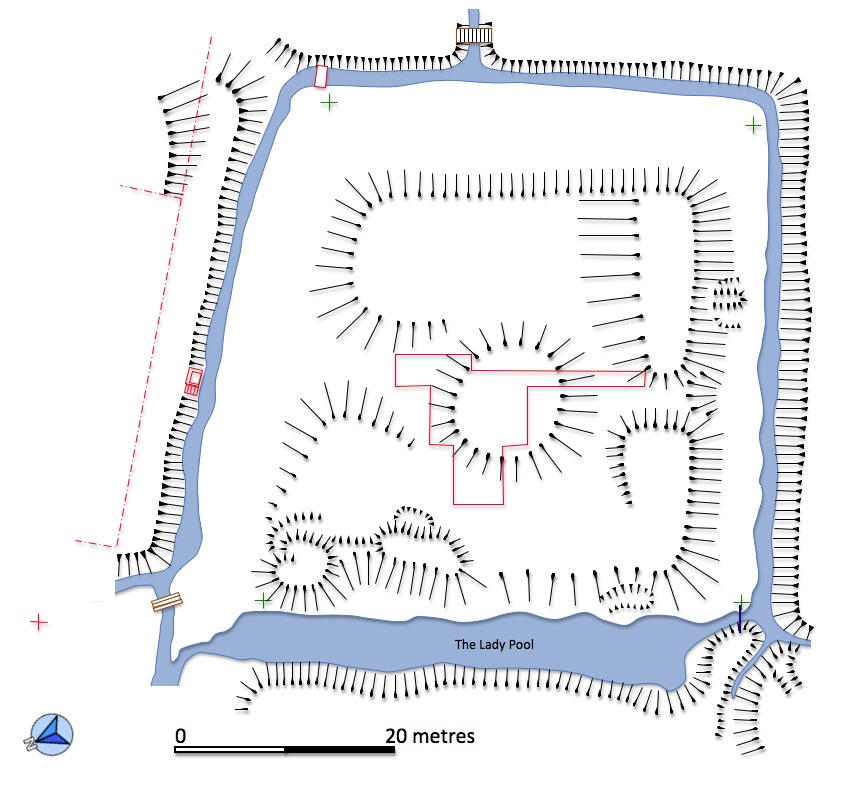
the plan of the water parterre originally surveyed in 2014 with the current excavation outlined in red.
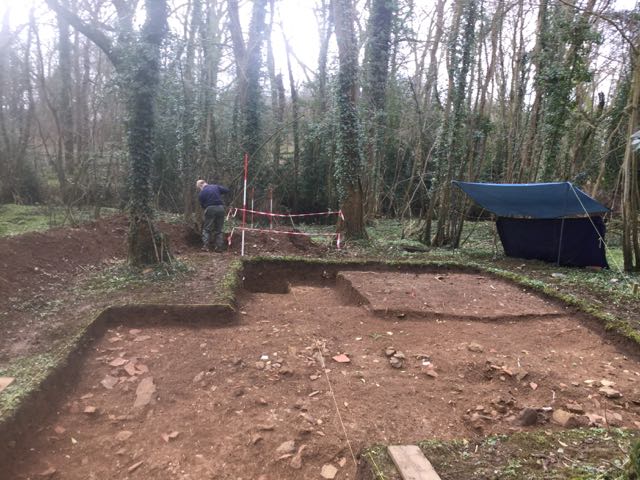
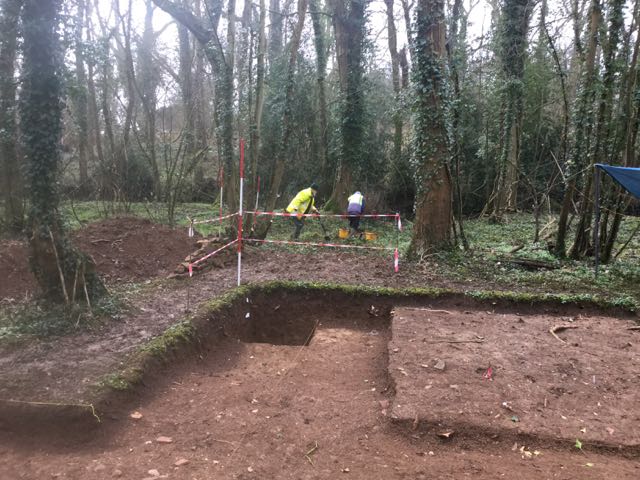
Ian sets to to shift some spoil and later in the week Peter and Ian lend a hand to remove turf and topsoil.
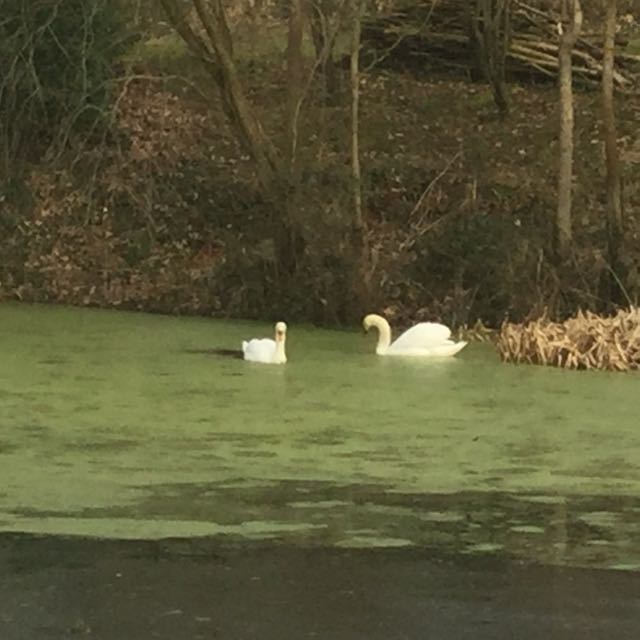
Plus in the first week of March: the lonely swan, lonely no more.
Unfortunately we had another wet
weekend so when we returned to the site the lower portion of the dig
was awash and everything was sticky. We were able to remove some
topsoil by periodically scraping the mud off on the side of the
barrow, not ideal digging conditions. However, on Friday the sun shone
pretty well all day so we were able to to shift the trays and boxes of
finds out from the corner where they had been sheltering and start to
fell trees and prune branches ready to begin leveling the site for
the concrete slabs which will form the base of the new finds sheds.
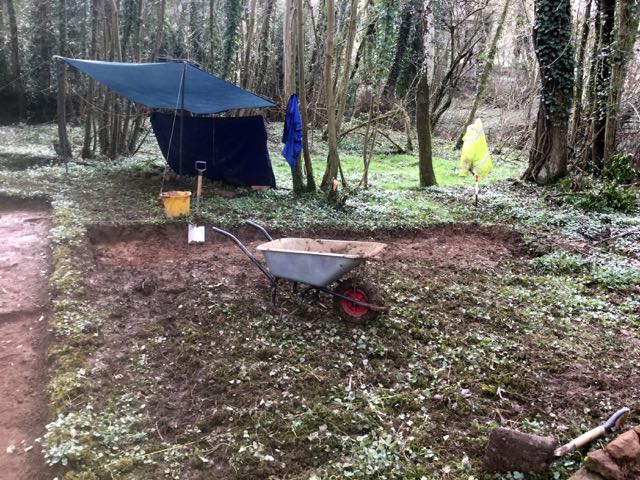
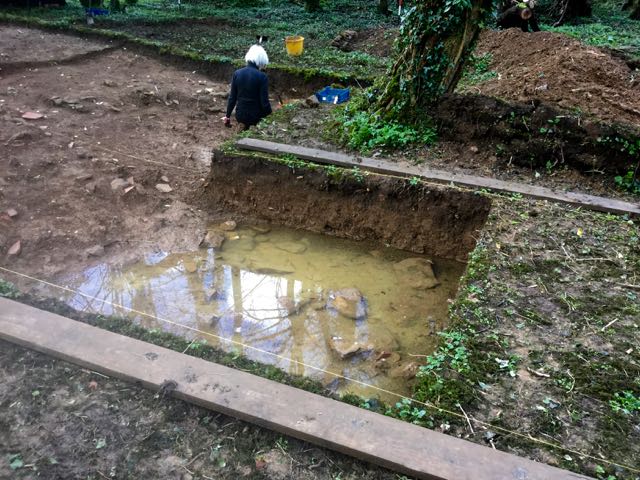
Up on the central island it's pretty wet but the ditch section is only fit for ducks.
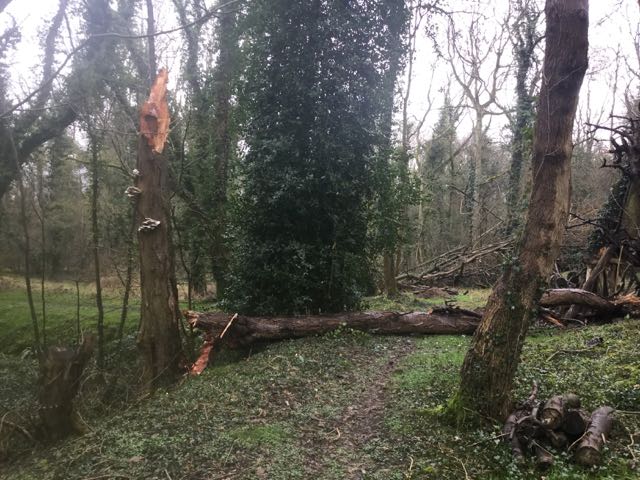
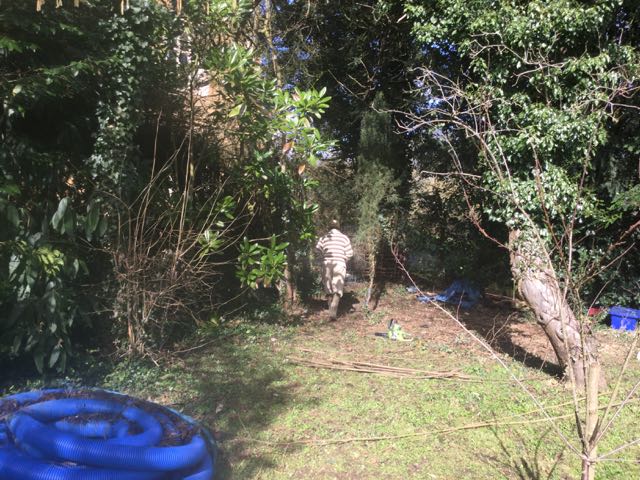
More windy weather brought down the remains of another tree, you can see why we don't like to linger once the wind gets up, never mind, the sun shone whilst we got cracking on the shed site.
The third week in March was pretty
productive, decent weather plus extra help meant that we were able to
complete shifting the topsoil from the extension of the excavated area
to the west and make good progress towards uncovering the the spread
of destruction debris in the upper part of the ditch fill. Plus after
much carrying of desperately heavy concrete slabs we were able to lay
the best part of of the base for the new finds sheds as well as making
a start on the long overdue task of sorting and reviewing finds from
the past six years of digging.
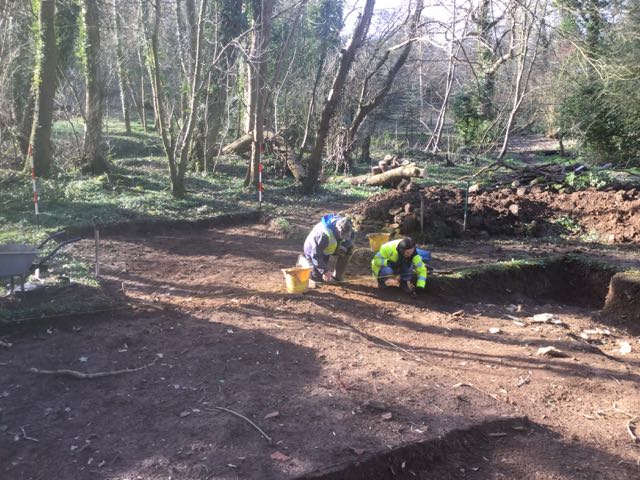
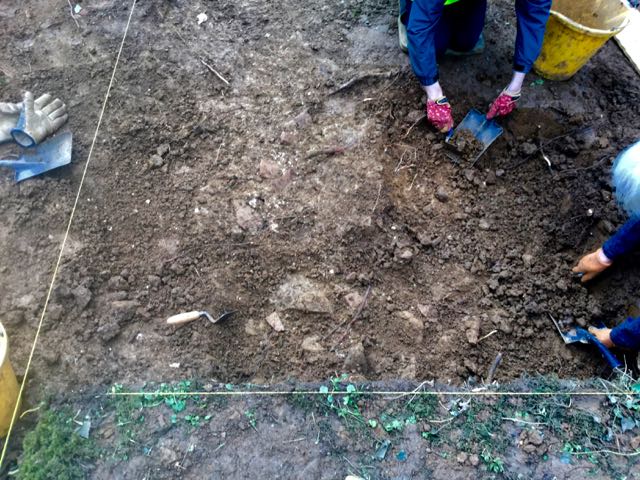
Peter and Annie make a start on uncovering the ditch fill... and here it comes. loads more rubble, tile and plaster.
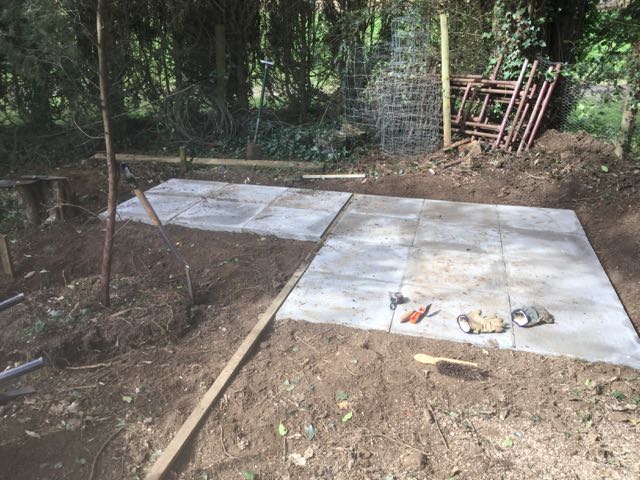
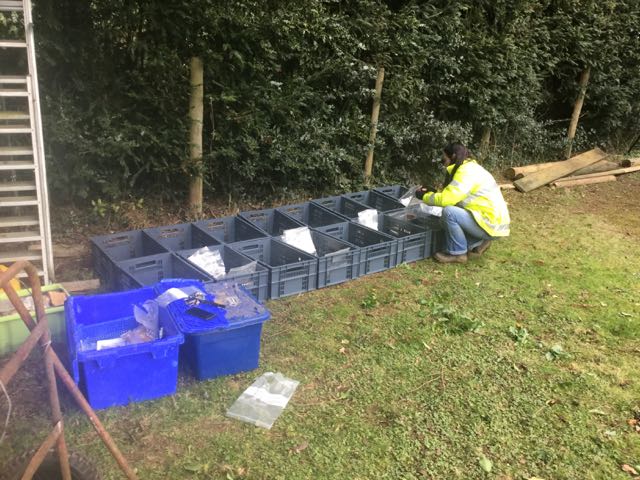
Bases are laid up at the observatory and a start is made on sorting through the finds
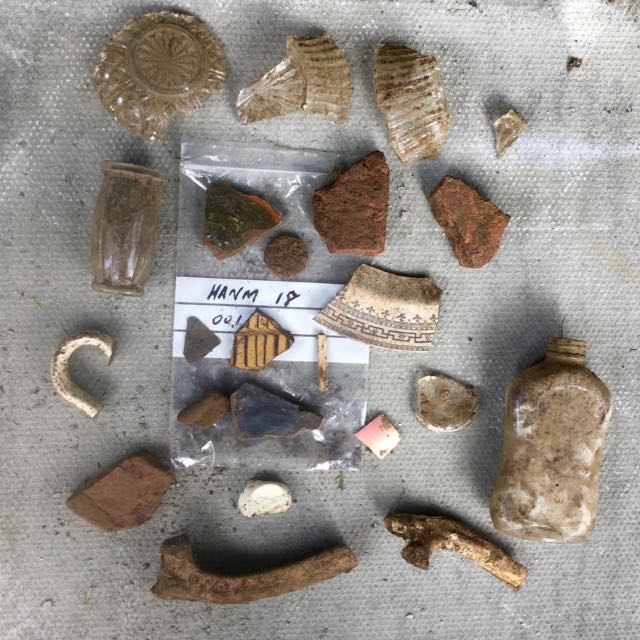
..and here are a few more finds recovered from the leveling operation for the base of the sheds, everything from the fifteenth through to the twentieth centuries.
The last week in March was wet, not
drenchingly so but persistently damp and slippy underfoot, not good
working conditions so it was no surprise that labour was a bit thin on
the ground. Even so we managed to take a significant slice out of the
ditch fill to the west revealing some interesting ceramic material. In
addition a further spread of rubble was uncovered when the trench to
the north was extended by another metre. Finally the last remnants of
topsoil were stripped from the long southern section so that after
Easter it can be all hands to the trowels.
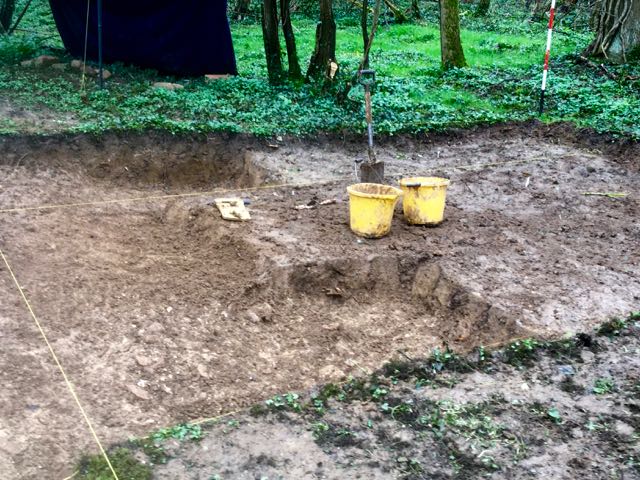
Too sticky and slippy for a wheelbarrow, excavations on the western portion of ditch which recovered ...
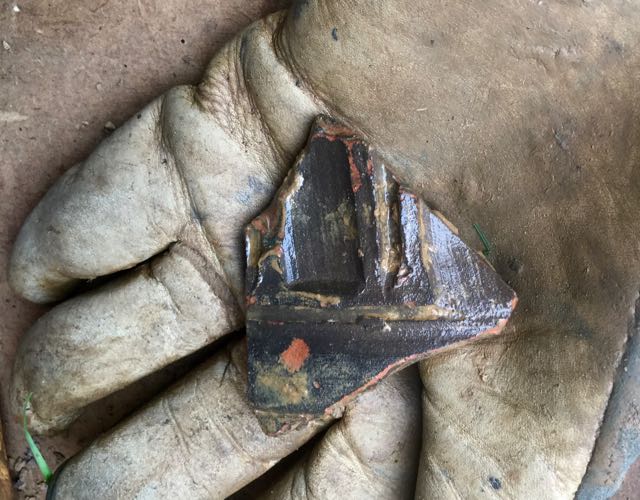
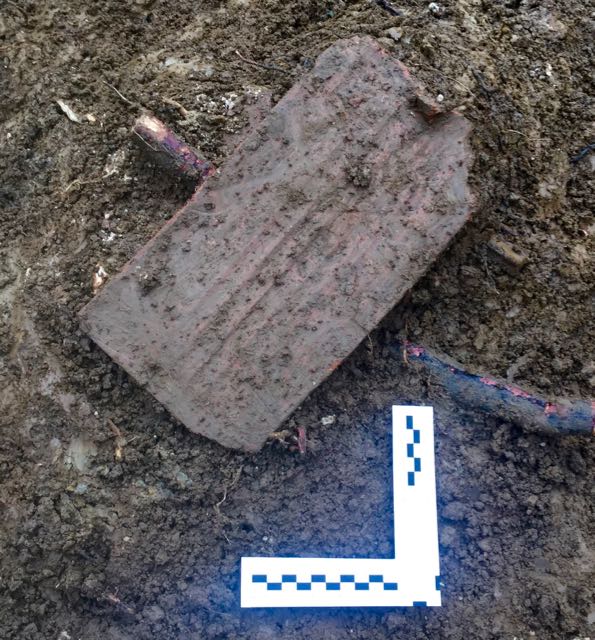
... another interesting piece of 'architectural' terracotta and an almost complete and curiously marked roof tile.
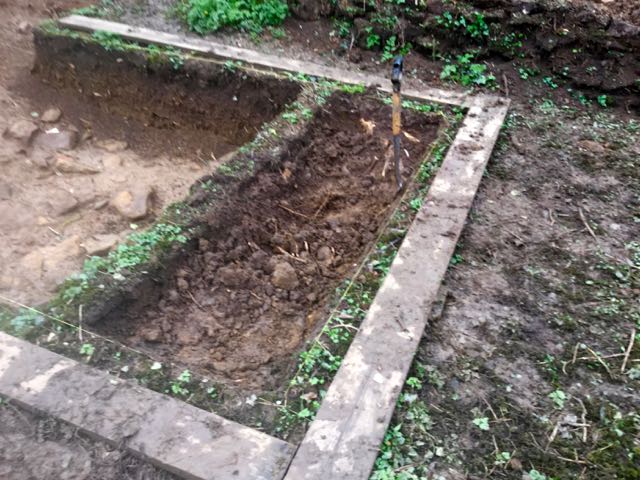
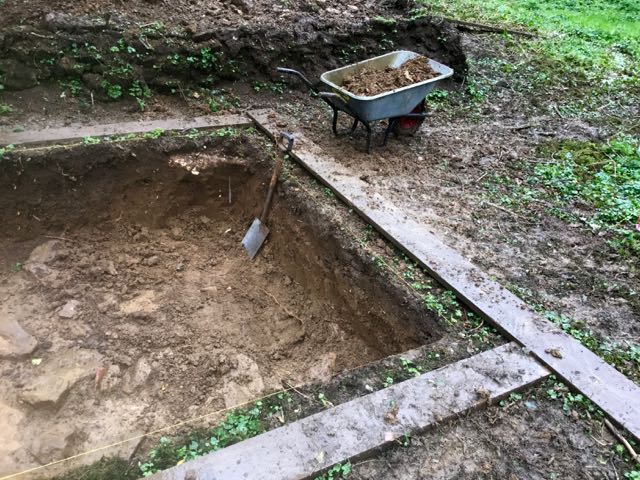
The northern extension was just hard graft: before and two tonnes of damp clayey soil after.
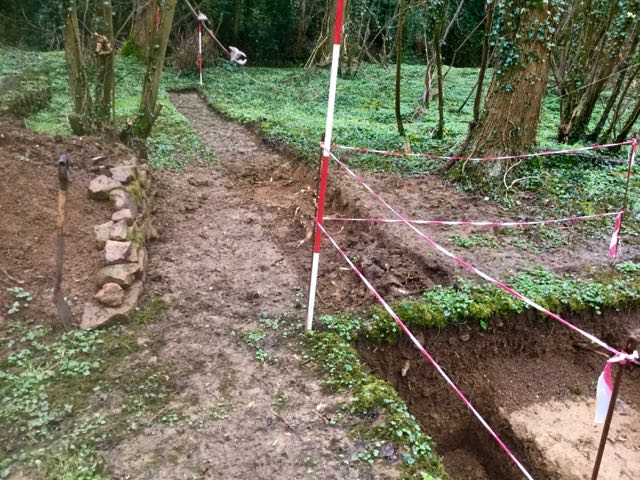
The last of the topsoil on its way out, still plenty of roots to remove.

Too sticky and slippy for a wheelbarrow, excavations on the western portion of ditch which recovered ...


... another interesting piece of 'architectural' terracotta and an almost complete and curiously marked roof tile.


The northern extension was just hard graft: before and two tonnes of damp clayey soil after.

The last of the topsoil on its way out, still plenty of roots to remove.